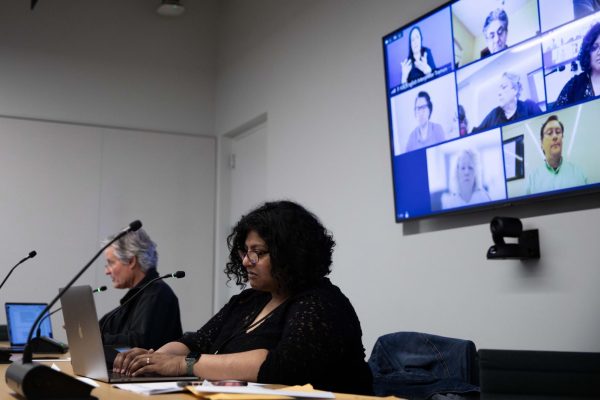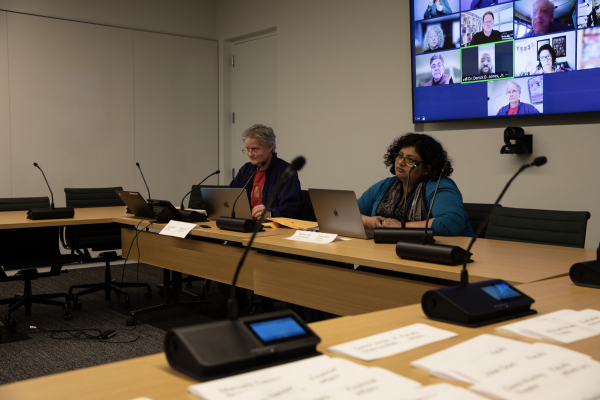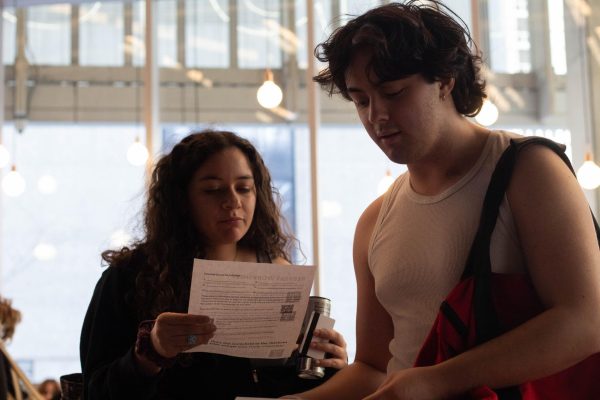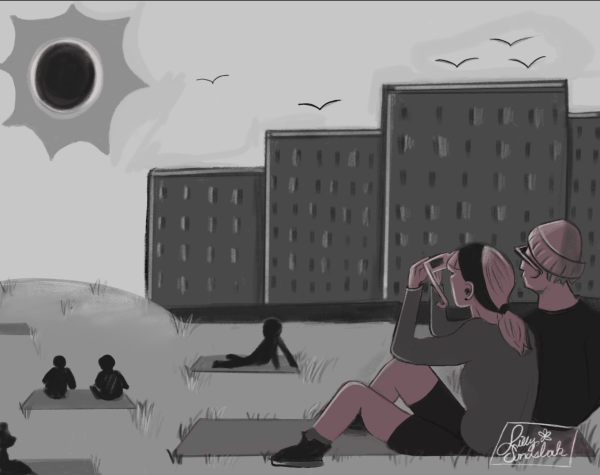Andres Seranno wows students with his charm, craft
November 23, 1998
Legendary photographer brings out the beauty in the most untouchable of subjects
Imagine looking at photographs of urine, blood, and dead bodies and thinking, “Wow, that is beautiful.” This is how photographer Andres Seranno has made a name for himself. Seranno has photographed everything from his own bodily fluids to members of the Ku Klux Klan, and no matter what he puts in front of his lens Seranno can make a photograph that seduces you and disgusts you at the same time.
Seranno came to Columbia on Nov. 12 as part of a guest photographer lecture series that featured Bill Burke, Fazil Sheik and Nan Goldin. The lecture consisted of a luncheon on Thursday afternoon and a night lecture that included a slide show. On Nov. 13, two sessions were held Columbia students could show their work to professoinal artists and get feedback from them.
Most people may rmember Seranno from the huge controversy that erupted when Sen. Jesse Helms got wind Seranno photographed the crucifix immersed in urine. The photographed titled “Piss Christ” was made with money that he received as part of a National Endowment for the Arts (NEA) grant. Seranno said, “It was a media circus, a political circus. I kept my distance and I never felt I was on a crusade.” Seranno never spoke out during the time, but now almost ten years later he can say, “It did a lot for my career, and he (Helms) got re-elected.”
One person at the luncheon lecture asked if Seranno felt that the Congress needed an enemy and he was the one that took the heat. “Out of the $15,000 that I got from this grant only $5,000 came from the government,” Seranno said.
The night lecture was in the Ferguson Theater and all Columbia students could get a seat. However, those from the Art Institute had to wait outside to be let in later. People sat everywhere, even on the stage, to catch a glimpse of Seranno. He showed his slides with little passion and avoided any questions that came up. When he showed a slide that was all white he said, “This is called milk.” The crowd erupted with laughter. It was almost like a comedy routine, and recited information that was almost word for word from a poster that promoted the lecture.
Seranno showed most of his older pictures and then went into his “A History of Sex” series. This is Seranno’s most recent work; it contains nude photographs that neither excite you nor do they look like classic art nudes. He photographed many things, from a nude girl on the Pope’s throne to hardcore sex acts. When questioned about these pictures Seranno said, “I don’t think that porn is better than art, or art is better than porn, art is just more expensive.” He doesn’t justify what he does; the only reason that it is art is that it hangs on a wall, so it must be art. ‘The History of Sex” pictures, said Seranno, “couldn’t get a dime in the porn store. People wouldn’t buy this, it doesn’t get you aroused.”
At the portfolio review Seranno came in after a long night, he went out to a gallery where a student was displaying his work and got a taste of Chicago nightlife. Friday morning (Nov 13) there were students who signed up to have Seranno look at their work. Two sessions were scheduled and each session there was room for ten students. There was everything from people who just graduated from Columbia with masters to those who are only juniors.
All kinds of work were displayed, from abstract close-ups to documentary photography. Seranno was helpful and insightful; he got to the point and gave his opinion.
This was a side that I am guessing most people don’t see; he was a much better speaker when there wasn’t a mob of people all wanting to know about him. The focus shifted from his work and controversy to the students work and esthetics of photography.
Seranno has always been one of my favorite photographers ever since I was in high school, and getting a chance for him to look at my work was a chance that may never happen again. The photography department offers students a huge opportunity and it is good that they are bringing in some of the best people so we can learn from them firsthand. Although Seranno is hated by a lot of people all over the world, he is uncommonly nice. I was surprised how much he would rather talk about students’ work rather than his own.








